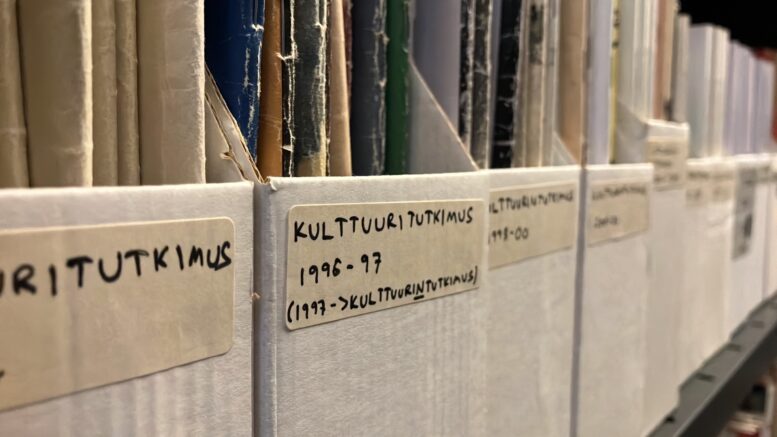Our scientific journal Kulttuurintutkimus – Kulturstudier (Cultural Studies) is currently running the competition for the quality journal of the year in Finland. The competition, organized by Kultti ry, the Association for Cultural, Scientific and Advocacy Magazines, has selected 48 magazines for audiences to vote on.
Seeing Kulttuurintutkimus lined up with publications more similar to the traditional cultural magazines – also my personal favourites Kritiikin Uutiset – Kritikernytt, Kulttuuritoimitus, Niin & Näin, Ny Tid and Taide – makes me think that many research journals have, in some ways, left their public. During the past decade, the most scientific journals have undergone a process of transformation from being general outlets of monitoring a field to becoming a effectivized channels for measurable academic output.
In the old days, scientific journals were largely committed to reporting and reflecting on what was going on in the field: there were reportages, essays, conference reports, interviews, overviews, debates, discussion articles. Nowadays it is becoming increasingly hard to find a publication venue for, say, a conference report. Academic book reviews are the last outpost that represents something else than research articles, and now journals are even considering to leave that genre. The only valued content seems to be the peer-reviewed article, preferable both by the author who is living with the goal to grow his or her list of publications, and the employer who receives funding according to the number of publications, among which the peer-reviewed are the most desirable. In this respect, journals have been reduced to assembly lines of scholarly publishing that is meritable and profitable in an optimal way. All other content is dismissed as too “resource-intensive”.
The most scientific journals have become effectivized channels for measurable academic output.
Content that is produced with a more journalistic approach departs from the audience’s objects of interest. The content is primarily produced to live up to audience’s needs, and the content producers are trying to proactively identify subjects that could be of interest. In the author-driven mode, in which journals are channels with the self-purpose of producing merit points, audiences exist if they happen to exist. The audiences’ perspectives are separated from the original publication channels into areas of popularized content, such as public science festivals, discussions at the libraries, newspaper articles, or social media.
Kulttuurintutkimus is actively counteracting trends in another aspect as well. During the past decade, it has defended its place as a printed publication. The fact that the journal is still printed, even if it also hosts an open-access online venue as the most scientific journals nowadays, places the journal closer to the magazine tradition. Indeed, in the magazines field, readers still want to read the content on paper.
A printed journal calls for other textual stylistics than the regular scientific article.
The readers of Kulttuurintutkimus tend to describe the material artifact of a printed journal issue as particularly elegant and enjoyable, and I agree: the squared format, with matte paper, and graphical artist Sami Saresma’s poetic covers, invites to be read in a cosy corner with a cup or coffee or tea, which is a completely another experience than reading an article on screen or printing it on A4 sheets. The presentation style in a printed journal also calls for other textual stylistics than the regular scientific article. Instead of having conventional abstracts at the beginning of the article, all articles begin with a lead in a more journalistic style, arousing interest in the substance, rather than summarizing the article content. In qualitative studies more generally, the choices related to expression and presentation are crucial, as “form” is inseparable from “content”.
Editing a journal that is located between requirements of rigorous science and more journalistically-oriented demands of communication is a challenging but very rewarding task. Now we are preparing for the last issue of the year, which is our 40th anniversary. Capturing the history of four decades requires some audience-oriented, journalistic approaches.
You can vote for Kulttuurintutkimus – Kulturstudier to become the quality magazine of the year (#vuodenlaatulehti) until 22 October by using this questionnaire.

Be the first to comment on "A scientific quality journal – quality from whose perspective?"